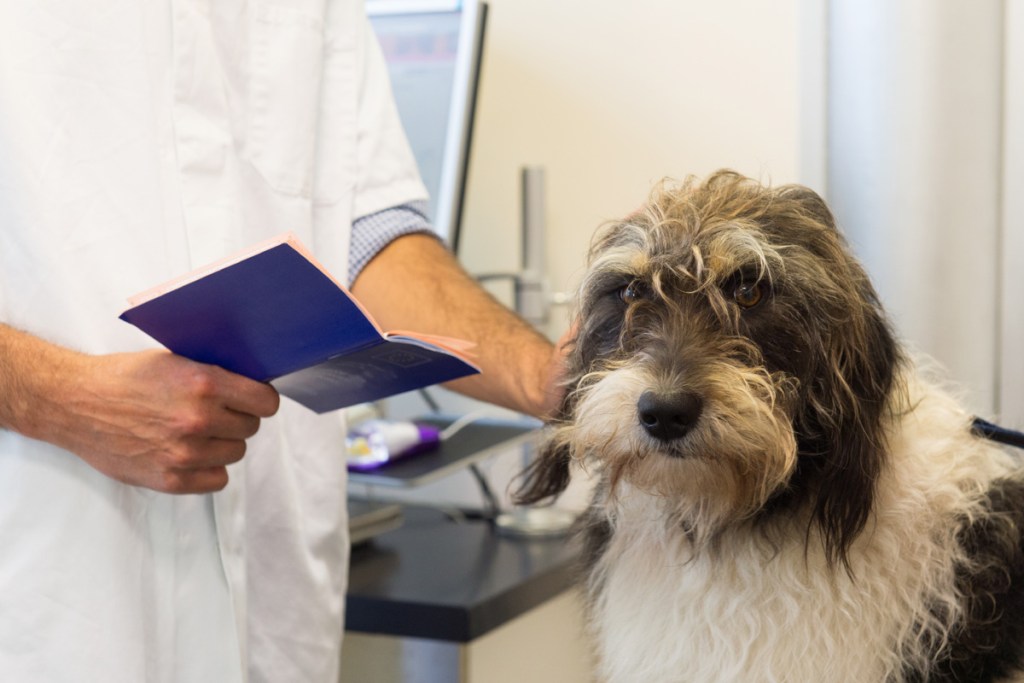Whether taking an extended vacation overseas or relocating to a new country, nobody wants to leave their beloved pet behind. But just imagine how horrifying it would be if you made the trip by air or sea only to have access denied to your animal companion at the port of entry. The only way to avoid this disaster is to make sure you have all the required paperwork before leaving home.
The first step in preparing for international travel is determining if your animal companion qualifies as a pet. According to the United States Department of Agriculture (USDA), a pet is a “privately owned companion animal not intended for research or resale” and includes the following animal groups:
- dogs
- cats
- ferrets
- rabbits
- rodents
- hedgehogs
- reptiles
- Amphibians
- pet birds (non-poultry)

How do I travel internationally with my pet?
If your animal companion qualifies as a pet, you need to research the paperwork needed to take him abroad with you. Your destination country may have specific health requirements that must be met before your pet can enter. Knowing these requirements will also help you determine if your animal companion would be happier at home while you go on vacation. For example, some rabies-free countries such as Australia and New Zealand require pets to be quarantined upon arrival.
The best place to begin your research is the pet travel section of the USDA website. Here you can use a country search feature to find requirements when traveling with pets. You’ll also want to check with the country’s consulate or embassy to confirm any changes to those rules and regulations.
Keep in mind that airline and shipping companies may have additional pet travel requirements. And if you’re traveling with a bird or other exotic animal, multiple agencies will be involved in the travel process including the USDA, U.S. Fish and Wildlife Service, and U.S. Customs and Border Protection.
What travel documents do I need for my dog?
The travel documents you’ll need for your dog will depend on your destination. Each country has specific requirements and almost all look for a pet health certificate. Unless the country you’re traveling to requires that your pet’s health certificate be issued by a USDA-accredited veterinarian, you can visit your own veterinarian to prepare your pet for travel. Your veterinarian will certify that your dog is healthy enough for the trip and meets all the requirements of the country you’re visiting. Those requirements may include:
- blood tests
- vaccinations
- microchip for identification
- a health certificate
- titer test results (proving the effectiveness of the rabies vaccine)
Remember when returning to the US, your dog will need to meet the same entry requirements as any pet arriving from abroad. Be sure to review those requirements before leaving on your trip to avoid problems when you arrive home.
Can you bring your pet to Europe?
Yes, you can take your pet from the U.S. to Europe as long as you have patience, do your research, and complete all the necessary paperwork says Gigi Griffis, in an International Living article. Griffis, a US citizen, has traveled to 19 European countries with her dog Luna and offers the following tips:
- Many countries including all of those in the European Union (EU) require pet dogs, cats, and ferrets to be microchipped with international standard chips. If your pet has a different kind of chip, consider taking a chip reader with you when traveling.
- Make sure your pet is current on vaccinations, especially the rabies shot. For Europe, the most recent rabies shot must be at least 21 days and no more than 12 months before your trip.
- Veterinary certifications will need to be in English and in the official language of the country you’re entering. So, for example, when traveling to France you’ll need pet health certificates to be in English and French.
- European countries require that your pet’s health certificate be USDA-approved. This certification should typically be completed within 10 days of traveling to the E.U. and five days when traveling to the United Kingdom.
Traveling with pets in Europe
Dogs are welcomed at many bars, cafes, and restaurants in Europe, and Griffis says that “dogs are absolutely adored in France and Italy.” Luckily, traveling within Europe with your pet isn’t difficult as long as you meet the requirements.
If your trip lasts for 90 days or less, your pet’s USDA-approved certifications will allow for easy travel within the EU. However, if you plan to stay in Europe beyond 90 days, you will need to get an EU Pet Passport. This passport is issued by an EU veterinarian and contains your pet’s official health information. The pet passport makes it easier to travel with your pet to countries within the EU. Non-EU countries such as the United Kingdom and Norway have additional requirements when traveling with pets. As with any country you can research those requirements through the USDA.

In conclusion
If the thought of being separated from your pet is the only thing stopping you from taking an international trip, then it’s great to know that your animal companion can travel with you. Just be mindful that traveling abroad with pets can be stressful. Planning well in advance and getting all your paperwork in order is key to a positive experience. With the right preparation, you and your buddy can breathe sighs of relief when you arrive at your destination ready to take on a new adventure.



